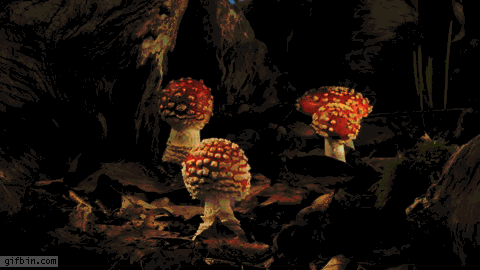Understanding bio/product fit
👋 Welcome to the Evolve your Portfolio series! I’m sharing the questions I ask to decide whether to invest in bio-as-tech companies. This isn’t investment advice - this is my process for learning about founders, their companies, and whether I contribute value. Although I’m coming from the perspective of investing, it’s a perspective that is also useful to non-biologists considering joining a company in the bio-as-tech space.
Questions are always welcome! You can drop a comment here, or hit me up on twitter @biooptimist.
The world of biology is so vast that only about 15% of species have been identified and named(1). Ranging from bacteria that live in the earth's crust to birds navigating by magnetic fields, there are incredible technologies we can harness.
The true power of biology lies in its diversity of specialization. Plants build structures that can stand for millennia, yeast can produce alcohol, and the best photosynthesizing ability is actually in algae. When it comes to building bio-as-tech products, there is no one organism that is universally the best choice; it is always application and product dependent.
This is the idea of biology/product fit; that the biology must be the right tool for the product being brought to market.
This means that my job is to understand whether the biology is likely a good fit for the product. So to find out, I ask the founder, “what biology is being used, and why?”
I admit - this assessment is tough to make without some biology knowledge. But at the same time, by focusing on a few critical principles it’s not necessary to have deep technical knowledge in the space.
This is a big topic, so I’m splitting it into two posts. In this post, I’m talking about the common biologies used and what makes them special (i.e. what they’re good for in the context of bio-as-tech). Next post, I’ll talk about how to take this knowledge and apply key principles for determining product/biology fit.
Common biologies for innovation
While we (as humans) have identified less than 1 in 6 species, the world of experimental biology is even more narrow. Academic research prefers to dig deep into a smaller number of species, hoping that the deep understanding developed can be translated to other species. It’s also a logistical constraint of running a laboratory.
Consequently, most bio-as-tech companies focus on these same well-studied organisms. This actually helps to simplify the landscape. In biology, there are always exceptions, but below are the most common organisms you’re going to encounter.
Bacteria
Bacteria are the simplest of organisms commonly used in bio-as-tech. It’s wise to keep in mind though that simplest ≠ simple. Bacteria are the most abundant life form on earth, and this is in part because they are exceptionally adaptive. Their short lifecycle allows them to quickly bounce back, even if >99% of the population is destroyed.
Some bacteria are so simple that they are basically a self-replicating bag of molecules. Other bacteria, along with yeast and algae, are more structurally complex and have well-defined internal compartments. Just like in a factory, having specific areas for specific tasks allows for the creation of more complicated products.
Bacteria leverage the encoding abilities of DNA(2) in an extraordinarily efficient manner. Because they have relatively small genomes, scientists have been able to study those genomes in great detail. In many cases, scientists have been able to understand and describe the complete cycle and feedback for entire metabolic pathways. This is the information that is allowing us to leverage bacteria for everything from diagnostics to manufacturing (this is true of some simple yeast, too).
Fungi
Fungi is the wildly diverse and incredibly powerful family of organisms that includes yeast, mushrooms, and molds. Fungi are more complex than bacteria and consequently can produce some molecules that bacteria cannot.
Yeasts are the most commonly used fungi in bio-as-tech today. This single-cell category of fungi are used to manufacture beer, pharmaceuticals, and even the myoglobin that makes Impossible burgers taste great! Yeasts are more complex than bacteria, and accordingly are capable of producing more complex outputs. Similar to bacteria, the commonly used strains of yeast are very well understood and scaled manufacturing has long since been achieved (ahem, the global beer market alone is valued at over 500 billion USD).
Though yeasts are the most common, there are interesting opportunities outside of yeasts! I mentioned this example in the footnotes of my last post, but there are some emerging products that use mycelium to synthesize materials. Additionally, fungi are phenomenal decomposers, and their ability to break down complex chemicals without producing dangerous derivatives could help to clean up a lot of manufacturing processes currently in use.
Plants
Do you know what’s cooler than a magician pulling a rabbit out of a hat? Plants! They pull carbon dioxide literally out of thin air, package it into cellulose, and release the leftover oxygen. 🤯
Plants are capable of producing complex molecules and come with great side effects for the global environment via CO2 capture and their interactions within ecosystems. Oh, and when it comes to plants, nature already solved the challenge of scalable manufacturing for us.
The challenge we face with plants is that a lot of GMO regulations have been written specifically in reaction to plants and agriculture. Some of those concerns, such as the impact of the pollen escaping into the environment, are quite valid. But many of the concerns are the result of a very specific type of modified plants, the Monsanto Roundup Ready crops.
The Roundup Ready plants are modified to be resistant to the herbicide (plant-killing chemicals) in Roundup, meaning that higher amounts of Roundup can be applied to fields to fight weeds without impacting the crops. To be honest, it makes my brain hurt that this was ever imagined to be a good idea, as the negative consequences were 100% predictable and have indeed come to fruition(3). Just like the overuse of antibiotics results in antibiotic resistance, the overuse of herbicides results in herbicide resistance (yes, superweeds are a real thing). When the fields are watered and it rains, the herbicide drains with the water, ultimately making its way into our waterways. All of that extra herbicide weakens and kills the plants it encounters, and adds excess phosphate to the environment(4), throwing ecosystems out of balance all the way to the ocean.
But Roundup Ready crops ≠ GMO plants. One of the challenges of sustaining the current human population is ensuring that we have sufficient nutrition. Nutritionally enhanced plants can do things like produce more vitamin A, which can reduce vision impairment in parts of the globe, without impacting the soil and ecosystems in which they’re grown. We can also enhance the natural ability of plants to increase carbon capture and retention. These are just some of the more obvious opportunities; there are many branches of research that are exploring even more creative repurposing of plant biochemistry.
Animal (cells)

The animal kingdom represents not only an incredible diversity of species (we’re talking coral, tardigrades, grasshoppers, hummingbirds, sharks...the list is long) but also a diversity of complex biochemistry(5).
This complexity makes animal cells harder to work with and to modify predictably. From a manufacturing perspective, there are some applications for which scaled manufacturing has been proven (pharmaceuticals in particular), but many others are still being worked on.
Let’s look at the food space, for example. Currently on the grocery shelves are meat alternatives like Impossible and Beyond. Both of these are plant-based and do not rely on animal cells for their manufacture. However, it’s worth pointing out that these are also examples of unstructured meats like ground beef and sausage, which are much easier to imitate. For products such as fish for sushi and beef steaks, we will need to master the production of structured meats.

There are many, many companies working on solving the challenges of scalably producing structured meats. The solutions developed in this process will enable entirely new markets that are currently unaddressable today, including healthcare interventions for humans(5). Of course, there are a TON of potential applications outside of the food space for animal cells - I point to this as a focus area because of the large amounts of capital going into it.
Up next...
After understanding the biology in use, the next step is to assess if it’s the right fit for the product. In my next post, I’ll discuss the key principles for analyzing bio/product fit, and walk through my matrix for understanding if there is a fundamental alignment between the two. This is one of the ways I seek to understand if I just met a visionary genius or a smooth-talking salesperson that won’t be able to deliver.
The NYTimes did a nice writeup on interpreting this number when the study was released.
DNA has several attributes that make it excellent for data storage. DNA is very compact (the world's data encoded in DNA could be stored in a single room) and DNA is very stable (stored correctly it can last thousands of years). Startups (like Catalog) and large companies (like Microsoft) alike are working to bring this technology into action.
Pun intended; not sorry.
For a long time, we only looked at the impact of fertilizers on adding phosphate to environments. However, the usage of Roundup has increased 15-fold around the world in the last 20 years, and recent research from McGill has found that herbicides now represent a problematic contribution as well.
Fun fact, relative to all of the other kingdoms of life, animals are the most metabolically similar to fungi. For example, insect exoskeletons Crazy, right?
There are many who advocate that research in the private sector can lead to significant public benefits. I think we’ll have an opportunity to test that idea as we figure out scalable manufacturing of structured meats. Many of the insights developed are likely to have the potential to assist in the treatment of human disease and aging, but whether that happens will largely depend on how these companies pursue and disclose their findings.







